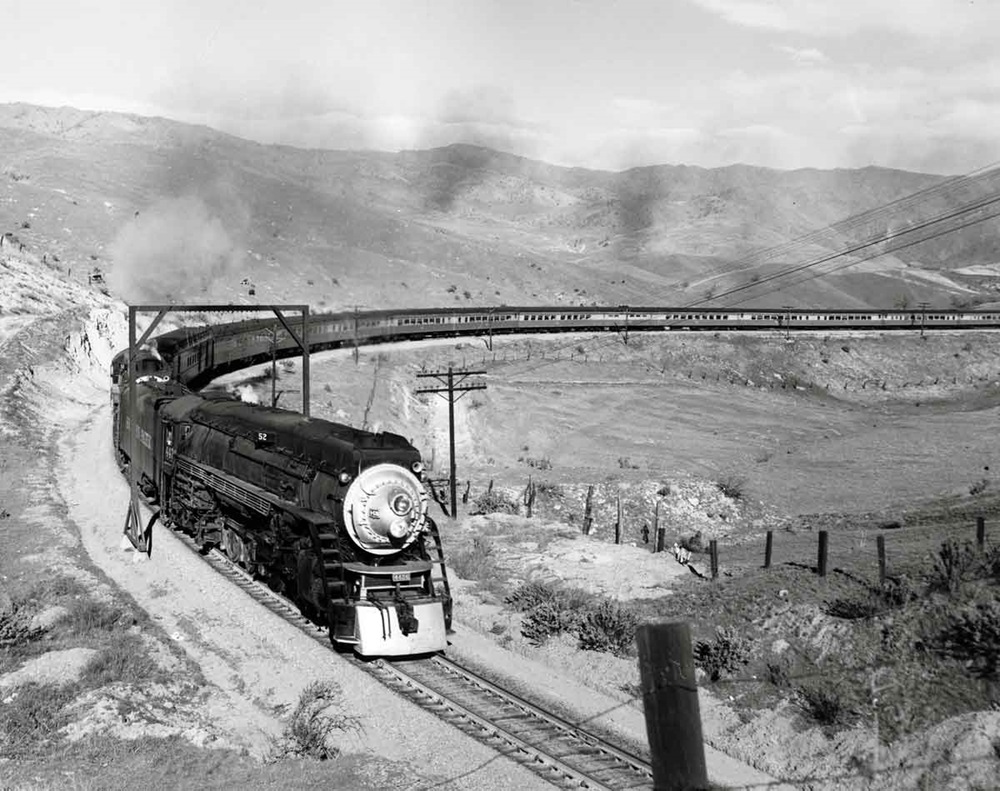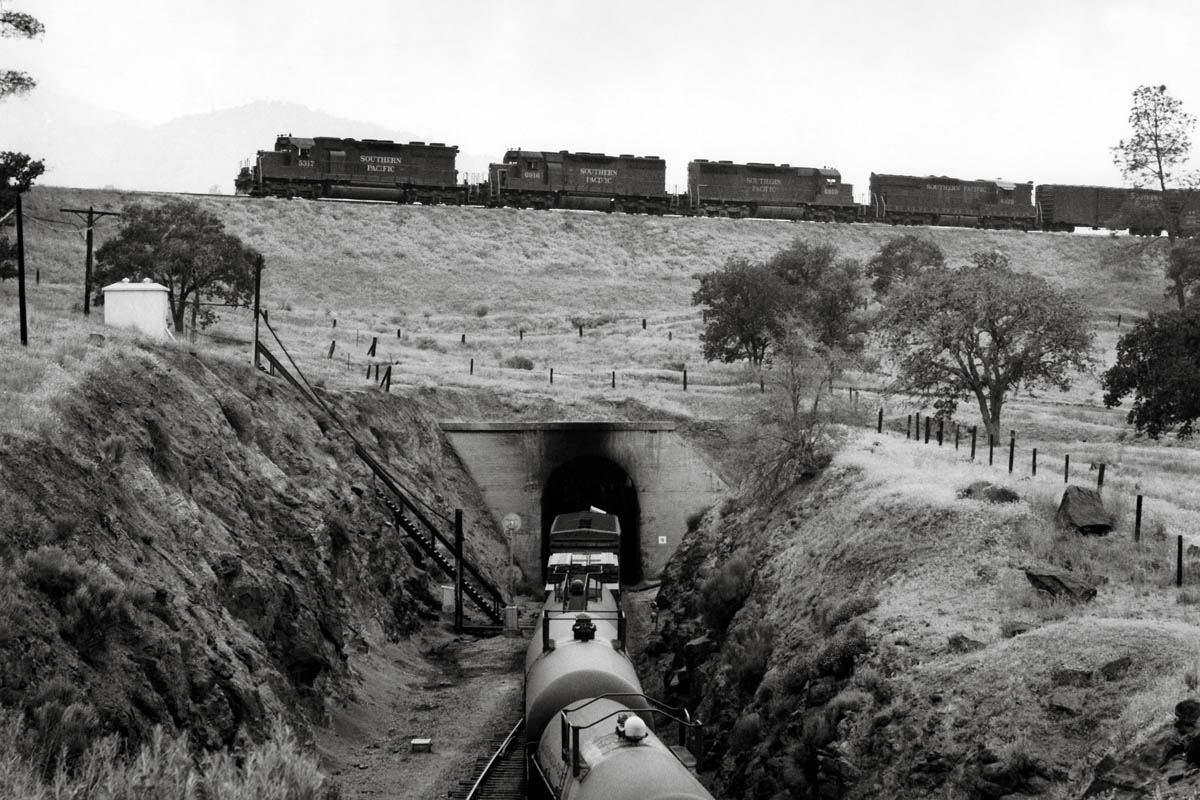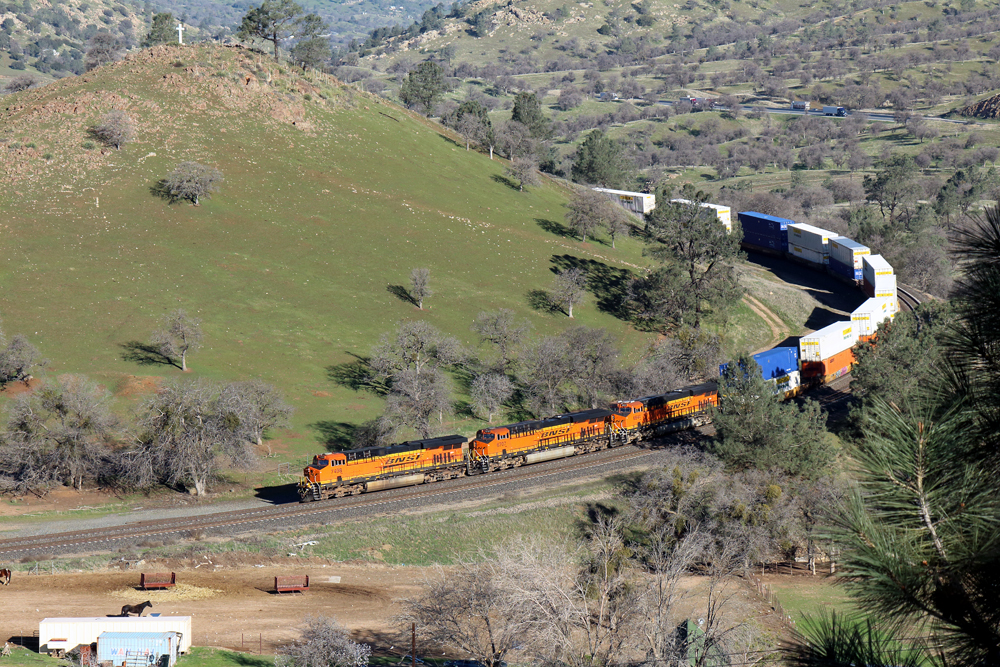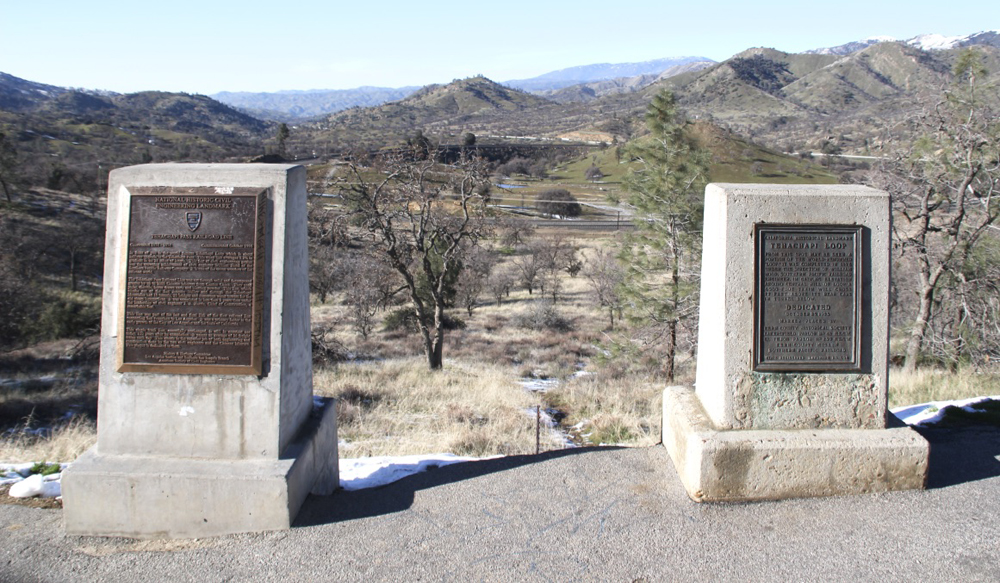When it comes to showmanship in mainline mountain railroading, California’s Tehachapi Pass can be described as a grand theater. Located between Bakersfield and Mojave, historic Tehachapi Loop is at center stage, an impressive helix stretching three-quarters of a mile while looping over itself to gain 77 feet in elevation. The loop itself sits at about 3,000 feet.

The impetus for this engineering marvel came from the Southern Pacific Railroad’s desire for an efficient connection between Southern California and the San Joaquin Valley by way of Tehachapi Pass. While the pass itself was initially surveyed in the 1850s by the U.S. Army Corps of Topographical Engineers, it wasn’t until the 1870s when SP began cutting through the mountain range to head south from Bakersfield.
It was the ingenuity of civil engineer William Hood that led to the commonsense plan to “make distance” with a loop at the halfway point of the pass. The main goal was to ease the gradient that would eventually average at around 2%. The loop itself was constructed between 1874 and 1876, with 3,000 workers from Guangzhou, China, carving through the mountainous terrain and laying track.
Upon completion in 1876, the Tehachapi Loop became part of the first route to connect San Francisco and Los Angeles. While some preferred naming the landmark after Hood, the civil engineer declined the honor. Thus, it came to be that the Loop’s name derived from the pass the railroad traversed, although the area of where the Loop is situated eventually would be called Walong, named after SP District Roadmaster W.A. Long.

Until the turn of the 20th century, Southern Pacific was the route’s sole operator. On Jan. 16, 1899, SP established a joint trackage agreement with the Atchison, Topeka, & Santa Fe Railway, with freight and passenger trains from both railroads sharing the line beginning in July of that year. This led to the route becoming known as one of the busiest single-track mountain railroads in the world, despite the opening by the SP in 1901 of the more direct San Francisco-Los Angeles Coast Line.
Tehachapi Loop has hosted a wide and impressive array of locomotives, ranging from SP’s 4-8-8-2 AC-class Mallets of steam’s golden years to today’s modern road diesels from Electro-Motive Diesel and General Electric. Regardless of motive power, helper service was always a necessity across the rugged pass. A major improvement came in 1942-1943 as Centralized Traffic Control was installed to handle wartime traffic, which had surged by 50%.

Keeping the Loop and overall main line open is not without challenges. Mother Nature shows no mercy with floods and earthquakes that have hit the region over the years. The most severe of the former was Sept. 30, 1932, when 4.39 inches of rain spilled over the Tehachapi Mountains in about 4 hours, crippling 31 miles of the railroad and killing 15 people. The most destructive of the latter came in the form of a 7.5-scale earthquake on July 21, 1952, severing track and caving in tunnels, this time with a death toll of 14. Economic downtowns, ranging from the Great Depression to the decline in postwar passenger service, also thinned traffic.
Yet against this backdrop of catastrophes and hardships, the Tehachapi Loop remains alive and well. It was added to the National Register of Historic Places in July 1997. As many as 40 freight trains a day from both the Union Pacific Railroad and BNSF Railway – successors to Southern Pacific and Santa Fe, respectively – operate on what is now the Mojave Subdivision between Bakersfield and Mojave. Since the formation of Amtrak in 1971, passenger service through the pass has become an extreme rarity, due to the high-density traffic. The only passenger trains are occasional detours or excursions.
Safe access to the Loop is still possible by State Route 58, with a scenic overlook off Woodford-Tehachapi Road. Former Trains and Classic Trains Senior Editor J. David Ingles made pilgrimages in the 1960s and 1970s to document the engineering landmark through previously unreleased 8mm color film.















The local government has stepped forward to make an attractive and brand new display site where these monuments are. A plug for my brother’s efforts at the local club (City of Tehatchapi) and museum. They were instrumental in pursuading the local officials to build the new display. endmrw0928241136